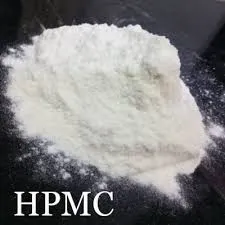
Gru . 28, 2024 02:17 Back to list
cellulose ether
Understanding Cellulose Ether Properties, Applications, and Benefits
Cellulose ethers are a vital class of cellulose derivatives formed by substituting the hydroxyl groups of the cellulose molecule with ether groups. These compounds have garnered significant attention in various industries due to their unique characteristics and versatile applications. This article delves into the chemistry, properties, applications, and benefits of cellulose ethers, providing a comprehensive understanding of their role in modern technology and everyday products.
Chemistry and Production
Cellulose is the most abundant organic polymer on Earth, primarily extracted from plant cell walls. To create cellulose ethers, cellulose undergoes a chemical modification process that typically involves dissolving cellulose in specific solvents and reacting it with ethers, such as ethylene oxide or propylene oxide. This substitution alters the properties of cellulose and results in different types of cellulose ethers, such as methylcellulose, carboxymethylcellulose (CMC), and hydroxypropyl methylcellulose (HPMC).
Each type of cellulose ether exhibits distinct solubility, viscosity, and thermal properties depending on the degree and type of substitution. For instance, methylcellulose is soluble in cold water and forms a gel upon heating, while CMC is an effective thickening agent due to its high viscosity in aqueous solutions.
Physical and Chemical Properties
Cellulose ethers possess several beneficial properties that make them valuable in a variety of applications. One of the most significant features is their ability to form gels and films, which can be useful in coatings and encapsulation processes. Additionally, cellulose ethers are biodegradable and non-toxic, making them environmentally friendly alternatives to synthetic polymers. They also offer excellent water retention properties, enhancing the performance of formulations in which they are used.
Due to their ability to modify viscosity, cellulose ethers can act as thickeners, stabilizers, protectants, and emulsifiers in different formulations. Furthermore, their solubility in water can vary significantly, allowing manufacturers to select specific cellulose ethers tailored to their requirements.
Applications
Cellulose ethers are widely used across numerous industries, including
cellulose ether

1. Food Industry Cellulose ethers like CMC serve as thickeners, stabilizers, and emulsifiers in various food products, such as ice creams, salad dressings, and sauces. Their ability to improve texture and maintain moisture content helps enhance the overall quality of food items.
2. Pharmaceuticals In the pharmaceutical industry, cellulose ethers are utilized as binders, thickeners, and disintegrating agents in drug formulations. They improve the bioavailability of active ingredients and can control the release of medications, ensuring a more effective therapeutic outcome.
3. Cosmetics and Personal Care In cosmetics, cellulose ethers are valued for their film-forming properties and ability to enhance product texture. They can be found in lotions, creams, shampoos, and gels, where they help stabilize emulsions and retain moisture.
4. Construction In the construction industry, cellulose ethers are added to cement and mortar formulations as water-retention agents, enhancing workability and adhesion. Their presence improves the longevity and durability of construction materials.
5. Textiles Cellulose ethers are also utilized in the textile industry as sizing agents and finishing agents, providing improved fabric strength and resistance to wrinkles.
Benefits
The advantages of cellulose ethers extend beyond their application possibilities. They are generally safe for human use, making them appropriate for various consumer products. Their biodegradability adds to their environmental appeal, helping to alleviate concerns regarding plastic pollution.
Moreover, the ability to tailor cellulose ethers for specific processes allows industries to optimize their formulations significantly. As research continues to explore new applications and techniques for cellulose ether production, the potential uses in emerging fields grow.
Conclusion
In summary, cellulose ethers are versatile and valuable compounds with a broad range of applications across multiple industries. From enhancing food products to improving pharmaceuticals and contributing to sustainability efforts, their unique properties and benefits make them indispensable in modern formulations. As technology evolves, cellulose ethers are likely to play an even larger role in developing innovative solutions for various challenges facing our world today.
-
tile-bonding-additives-for-stronger-bonds
NewsAug.22,2025
-
construction-grade-rdp-for-wholesale-needs
NewsAug.22,2025
-
trusted-wholesale-hec-partners
NewsAug.22,2025
-
hec-solutions-for-industrial-excellence
NewsAug.22,2025
-
construction-additives-need-hpmc-essentials
NewsAug.22,2025
-
hpmc-versatile-cellulose-ether-for-industries
NewsAug.22,2025







